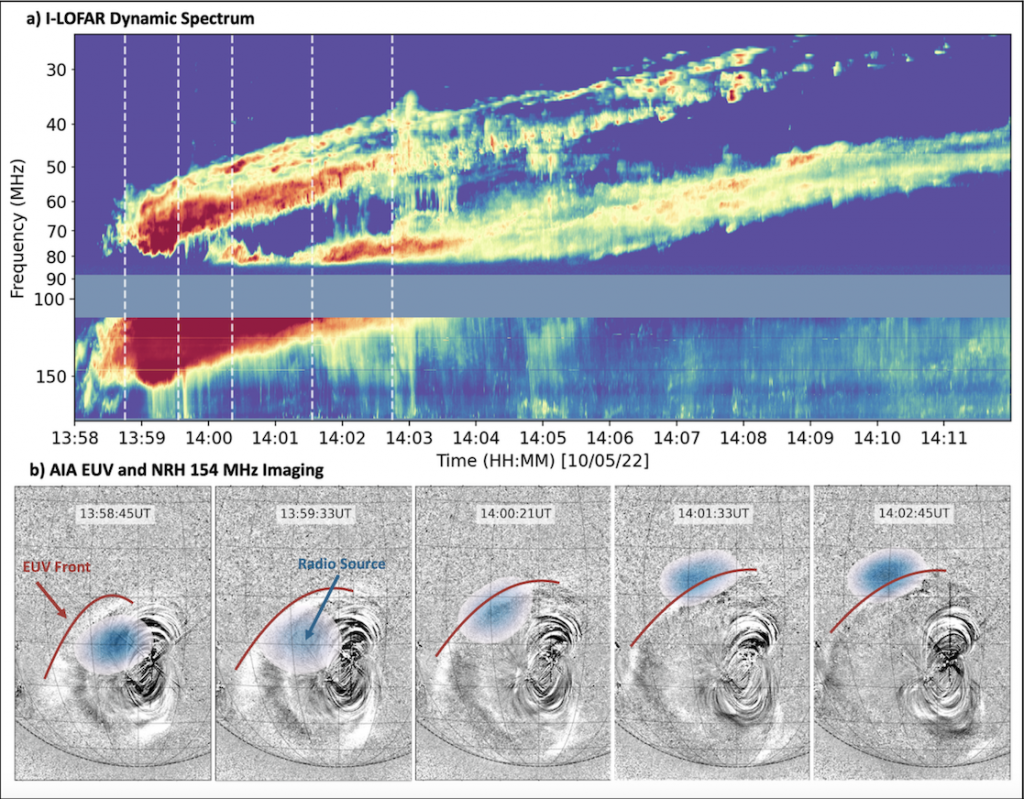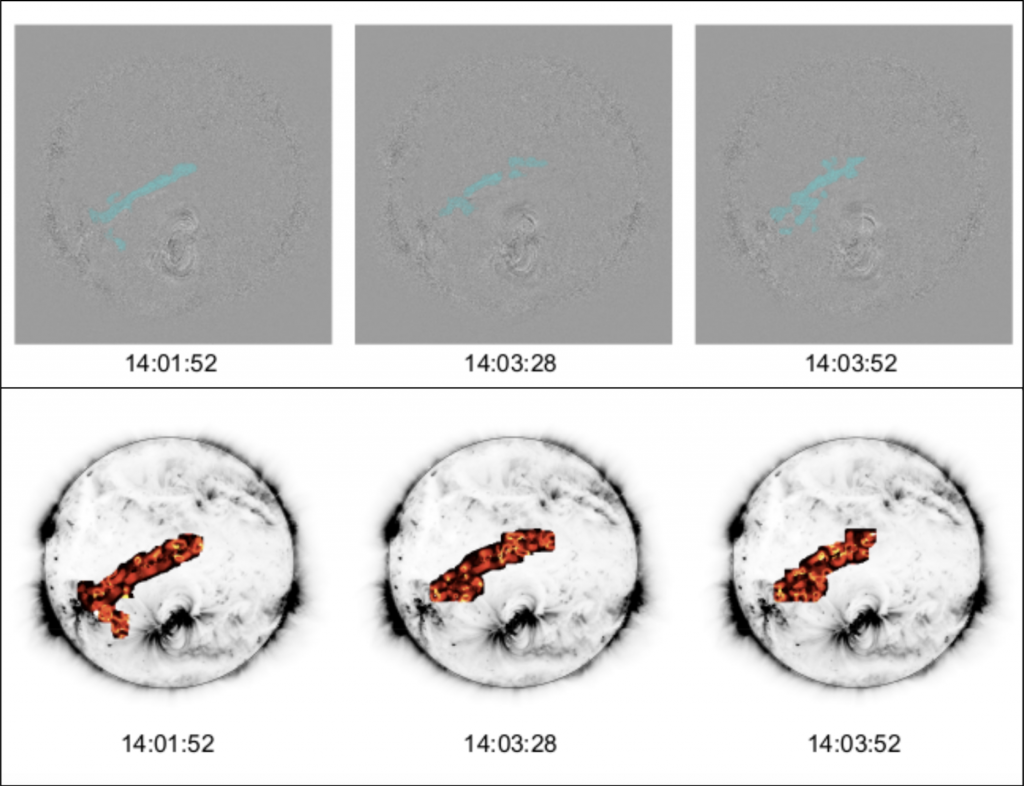Together with colleagues, we studied an impulsive X-class flare from May 10, 2022, where both a faint CME and EUV wave were observed (Rigney et al., 2024). We studied the characteristics of the radio emission, the propagation of the EUV wave and the relation between both phenomena. As the dynamic spectrum in Figure 1 shows, a type II radio burst was recorded which lasted for approximately 25 minutes. The type II burst displayed a band-split in both the fundamental and harmonic bands. The on-disk signatures of the global EUV wave were identified using observations from the AIA onboard the SDO. The wavefront was highly directional, propagating mainly to the north-east of the erupting active region, with some indication of wavefront propagation to the south of the active region, similar to the observed radio emission.

Radio imaging data sampled at 10 second cadence and 154 MHz and 408 MHz was obtained from the NRH. Two clear radio sources on the solar disk were observed propagating away from the active region for a short time after the flare. The southward propagating emission quickly faded after approximately 40 s. The northward propagating emission was observed for approximately 7 min, with clear motion of the peak along the axis of propagation of the EUV wave. The velocity of the EUV wave-front was measured accounting for the propagation across the spheroidal solar surface. Two methods were used to estimate this velocity, CorPITA (Long et al. 2014) and Wavetrack (Stepanyuk et al. 2022). Figure 2 shows the application of Wavetrack to the EUV wave front. The mean velocity of the wave as obtained by CorPITA is 450 km/s, while the more detailed Wavetrack obtained a mean velocity of 700 km/s. The two methods give results that agree within the error margins.

